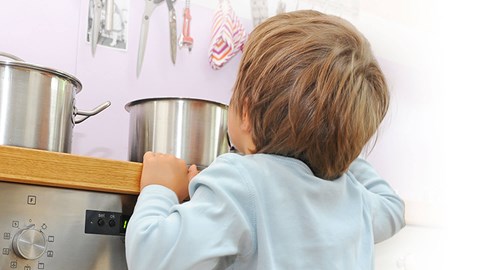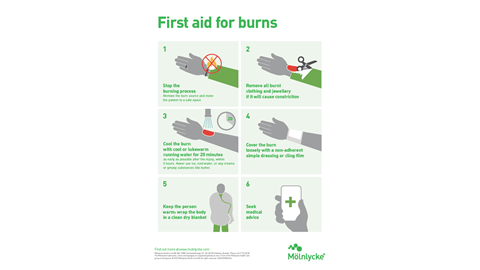Burns can happen to anyone, anywhere at anytime
What is a burn?
According to the World Health Organization, a burn is “an injury to the skin, or other tissues, primarily caused by heat or due to radiation, radioactivity, electricity, friction or contact with chemicals. Most burns are due to heat from hot liquids (scalds), hot solids, or fire
The most common burns are small and superficial leading to local injuries; they are often very painful.
Some burns can be extensive, slow healing, disfiguring or resulting in contractures and/or joint dysfunction which may cause psychological stress and significantly impact the quality of life.
In severe cases, the management of burns can be complex and will require a multidisciplinary approach.

Simple measures can be applied to prevent a scald from happening:
- Lower the temperature in hot water taps
- Keep hot drinks away from table/counter edges, out of reach of young children
- Establish a 'kid-free zone' of at least 1 meeter around the stove and areas where hot food or drink is prepared and carried
- Use a kettle with a short cord to stop it hanging over the edge of the work surface, where it could be grabbed
- Do not drink hot liquids through a straw
- Turn the handles of pans inward

Adequate first aid measures help to limit the pain and damage to the skin
- Stop the burning process: remove the burn source and move the person to a safe space
- Remove all burnt clothing and jewellery if it will cause constriction
- Cool the burn with cool or lukewarm running water for 20 minutes as early as possible after the injury, within 3 hours. Never use ice, iced water, or any creams or greasy substances like butter
- Cover the burn loosely with a non-adherent simple dressing or cling film
- Keep the person warm: wrap the body in a clean dry blanket
- Seek medical advice
'References'













